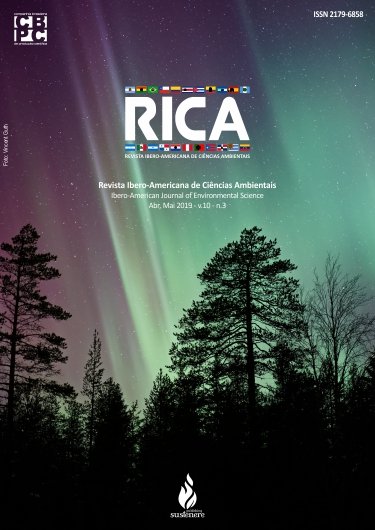Intestinal parasites in dogs from northeast brazilian biomes: zoonotic and environmental aspects
DOI:
https://doi.org/10.6008/CBPC2179-6858.2019.003.0005Keywords:
Enteroparasites, Dogs, Prevalence, Zoonoses, NortheastAbstract
The role of the dog as a definitive host of intestinal parasitic diseases with zoonotic potential has been widely recognized as a public health problem. This study analyzed the prevalence and distribution of enteroparasites in feces of street dogs from eight cities of the different northeastern biomes, with the aim to study the environmental contamination by zoonotic enteroparasites. Fecal samples were collected in the municipalities of João Lisboa and Raposa (Maranhão), Piripiri and Domingos Mourão (Piauí), Fortaleza (Ceará), Petrolina (Pernambuco), Paulo Afonso and Salvador (Bahia). Of these samples, 43.2% for some kind of intestinal parasite were positive. Higher prevalences by hookworms with 43.5% were found, followed by Toxocara canis with 15%, Neospora sp. with 10.2% and Cryptosporidium sp. with 8.2%. Analyzing the percentage of positivity by enteroparasites in the four biomes of the Northeast region, The Atlantic Forest biome was the most prevalent (54.9%), followed by the Amazon (54.3%), the Caatinga (40.2%) and the Cerrado (31.8%). The study of the occurrence and distribution of these parasites contributes to the epidemiological surveillance of enteroparasitary diseases and to the application of public and veterinary health programs to minimize the possibility of infection and reinfection of the animals and the transmission to humans.
Downloads
Downloads
Published
Issue
Section
License
The CBPC - Companhia Brasileira de Produção Científica (Brazil CNPJ: 11.221.422/0001-03) the material rights of the published works. The rights relate to the publication of the work anywhere in the world, including rights to renewals, expansions and dissemination of the contribution, as well as other subsidiary rights. All electronically published works may subsequently be published in printed collections under the coordination of this company and / or its partners. The authors preserve the copyright, but are not allowed to publish the contribution in another medium, printed or digital, in Portuguese or in translation.









